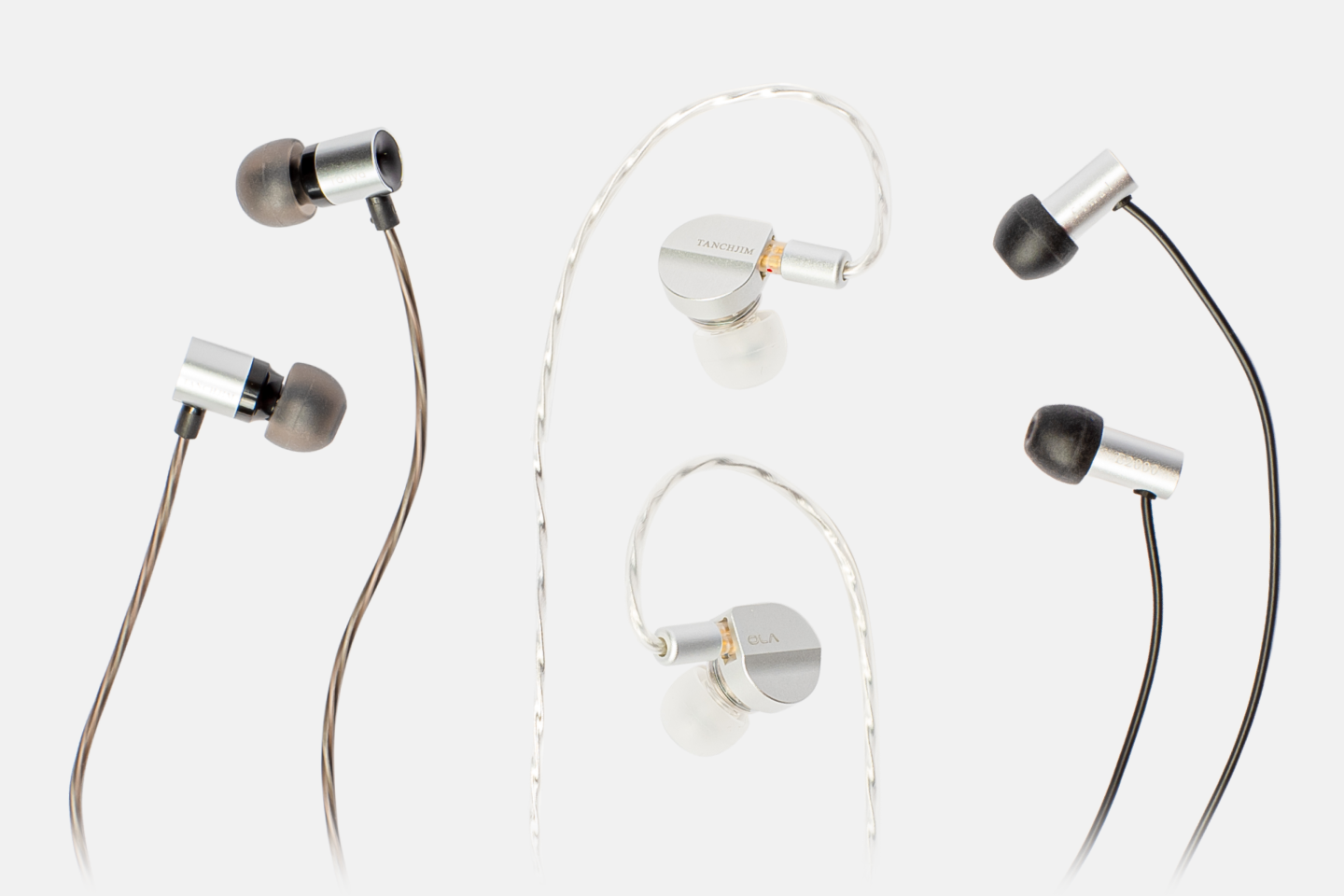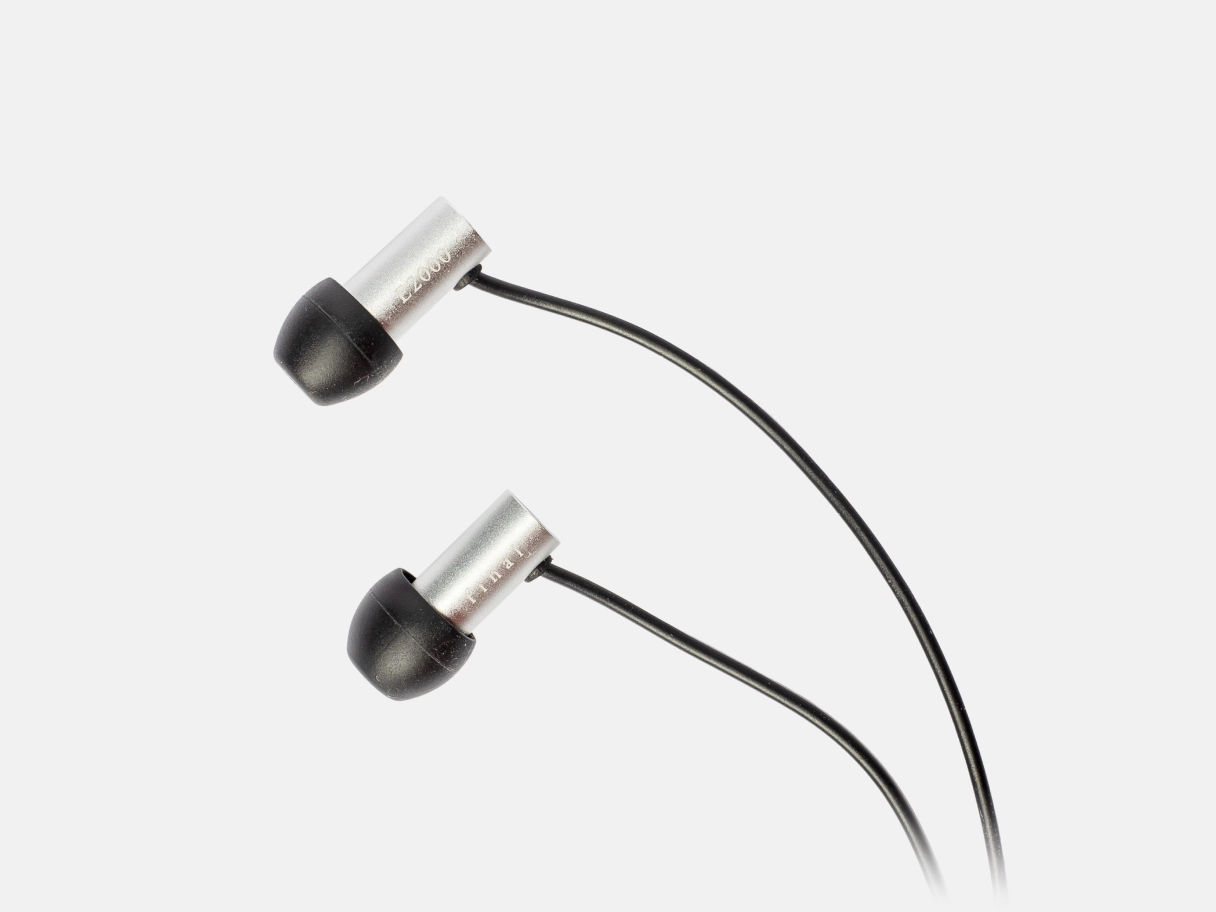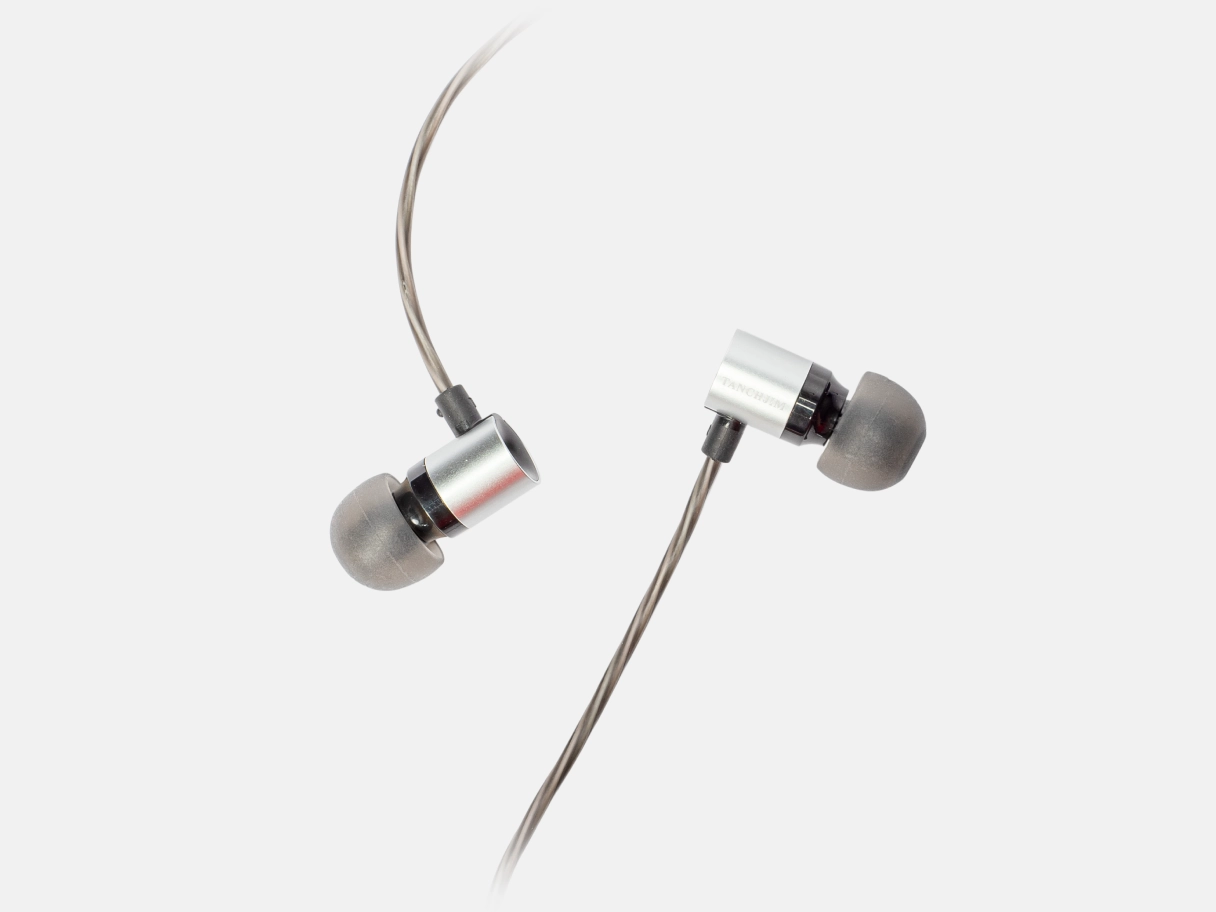

Bluetooth headphones have become the daily choice for many, but wired earphones have their place. They step in when connectivity falters, batteries die, or a more straightforward experience is desired.
Over the past decade, phone manufacturers stopped including wired earbuds with smartphones. At the same time, the in-ear monitor (IEM) market has exploded.
I’m recommending a few IEMs around $50 or less with a built-in mic that balance aesthetics, build quality, comfort and sound quality.
Why IEMs? Compared to earbuds, IEMs usually produce higher quality audio and feature better passive noise isolation. Why $50? This price allows for quality while staying affordable enough for everyday, everywhere use.
This topic involves a lot of terminology. Make sure to check out the basics.
These earphones sound neutral, are minimally designed and quite small. They fit well for a variety of ear shapes use cases.

The Final E2000 (mine are the E2000CS, meaning they have a controller and are in silver) sit in the middle of the E-series range from Final, which designs and manufactures headphones and earphones in Japan.
Like most of Final’s products, the E2000s are both minimal and elegant in design. The shells are small cylinders made of bead-blasted, anodized aluminum available in silver and black. The backs feature polished metal grilles with radial holes. The Final logo and model designation are faintly etched on either side of each earphone. L and R are etched on the underside.
The wires are thin and smooth. They resist tangling and resist cable memory. The two wires converge at a cylindrical splitter and matching cinch. The cinch offers just enough resistance to stay put while still sliding freely. Cable microphonics can be a problem when moving and wearing the wires going down. The problem goes away when putting the wires over the ears.
The button on the remote, found on the right-side wire, is barely raised above the controller, making it hard to find via feel. The button offers very little travel and is mushy when clicked.
At the end of the cord is a right-angle 3.5mm TRRS plug with a sturdy strain-relief. Though the right-angle plug gets in the way when connected to a smartphone dongle, it works well with computers and other devices with 3.5mm jacks.
The extensive use of cylindrical shapes results in a minimal, yet sophisticated look. The build quality is impeccable. There are little to no signs of the manufacturing process. The materials and finishes should stand up to years of use with little to no wear.
Like most of Final’s lower-end earphones, the E2000CS comes in a small, easily recycled, cardboard box. There are 5 pairs of Final ear tips, removable ear hooks, a velcro cable tie, and a faux-leather drawstring bag.
Unfortunately, like most earphones, these don’t appear to be easily repaired. My hope is that the mechanical and electrical simplicity of these earphones should avoid the need for repairs.
Given how small these earphones are, they should work well for a variety of people. The narrow 4.4mm nozzles work with the included ear tips via Final’s unique swing-fitting mechanism. This feature allows the tips to tilt and better conform to the ear canal. I found the passive isolation to be excellent, beating out the active cancellation on the AirPods Pro 2, though not as good as earplugs.
The output of the microphone (both in recordings and calls) is not noticeably different to Apple EarPods.
As for sound quality, these headphones are neutral sounding, with slightly quieter bass. I found that they really shine in rendering vocals. The soundstage is wide enough to enjoy songs with complex spatial placement. While, these earphones won’t wow audiophiles with standout performance, they also won’t disappoint.
If you want a bit more bass, you can upgrade to the E3000, which feature a similar, yet slightly more flashy polished stainless steel exterior.
These earphones, with their two-tone finish, are visually interesting, yet refined. They have more mid-bass than the others in this list, making them great for popular music.

Tanchjim is a Chinese company focusing on IEMs and accessories like amplifiers. The Tanya is their most popular entry level model. They are cylindrical like many other IEMs. I tested the standard version available with a remote and 3.5mm TRRS plug. There are other variations available, including a DSP version that has a different tuning and USB-C plug.
The earphones appear two-tone due to the polished outer aluminum shell that surrounds the black injection molded inside. The end of each earphone tapers much like a speaker cone, with a titanium mesh screen. The L/R markings are very faintly molded into strain-relief sleeves. To differentiate between left and right, I instead rely on the Tanya and Tanchjim logos etched on the left and right earphones, respectively.
The wires are thick braided pairs coated in flexible black translucent material. a simple black cylindrical splitter unites the main cable with the left and right cables. There is no cinch. At the end is a straight 3.5mm TRRS plug.
The remote matches the two-material construction of the earphones, with an aluminum outer shell and black plastic inner shell. The button is easy to find by touch and offers a satisfying click.
The build quality is excellent. The differing materials fit together with tight tolerances. Joints are nearly imperceptible to touch.
These earphones come in a heavy cardboard box with a sliding outer sleeve and a foam insert that displays the earphones upon opening. I wish Tanchjim provided more minimal packaging to reduce environmental impact and reduce waste.
Aside from the earphones, Tanchjim includes seven pairs of ear tips in different sizes, a cloth drawstring bag, and replacement filters for the nozzles.
Like most other earphones, these don’t look repairable. I think that the great build quality should reduce the chance of them breaking.
The nozzles are noticeably larger than the Final E2000CS at 5mm. With the right tips, I had no problem with fit. However, the nozzle diameter may pose a problem for those with small ear canals.
Given the earphones didn’t go in as far as the Final E2000CS, I found passive isolation to be a little worse, but still good enough for most cases.
The thick cables are less susceptible to microphonics. I had no problems with wearing the wires going down. You can wear the wires over the ear, but given how close the microphone is to the right earphone, it could be awkward. The microphone offers quality similar to Apple’s EarPods.
As for audio quality, these really shine, especially given the price. The bass is especially punchy. Vocals sounded clear, though not as clear as the Final E2000CS. I found the highs to be a bit muted, which could be a problem for critical listening. Overall, I think this will please most, especially those listening to modern music where the punchy base will be an advantage.
These earphones have beautiful shells machined from aluminum. Given their larger size, fit is worse than the others, but this is made up by the removable cables. With their neutral-tuning and great stereo separation, they can fit a variety of use cases.

The Ola, with its removable cables and higher price occupies the top of Tanchjim’s low-end lineup. At 10mm, the drivers in these earphones are quite a bit larger than the 6.4mm in the E2000CS and the 7mm in the Tanya. Hence, the teardrop-shaped enclosure is much bigger as well.
The construction is reminiscent of the Tanya, with a CNC-machined, bead-blasted and anodized aluminum shell containing a clear injection molded plastic interior. The shells have a slight scallop, above which are the Tanchjim and Ola logos on the right and left earphones, respectively
The nozzles, which are angled to fit the ear canal, are a bit longer than the Tanya’s, but the same 5mm in diameter. The ends of the nozzle have non-removable dust-proof and waterproof filters. I found the combination of the larger earphone shell and larger stem resulted in a looser fit in my ear. However, it may not be a problem for you.
There aren’t L/R indicators on the shells, so I usually relied on the fact that the remote is on the right side.
The braided cables are surrounded first in a silver-plated shield and then a clear, rubber-like outside. On the earphone sides are ear hooks made of thick tubing that ensure that the cables fit around the ears. Of note with these earphones is that the cables are removable, utilizing the 2-pin plug found in other IEMs. While they won’t fall out by accident, you can easily replace cables if they break.
The 2-pin plugs, splitter, and straight 3.5mm TRRS plug are all encased in the same silver-colored bead-blasted anodized aluminum as the earphones. Confusingly, the remote, which is functionally identical to the Tanya’s, is darker than the earphone shells. It’s easy to find by feel, and the switch clicks satisfyingly.
Craftsmanship is, like the rest of the earphones in this list, excellent. The parts all fit together precisely. There nearly no signs of the manufacturing process.
The packaging, like with the Tanya, is a bit to extensive for me. Inside the paper sleeve is a tight-fitting cardboard box. Open the box to reveal a folder with paperwork, a form-fitting foam insert displaying the earphones, and then the cable, a cloth drawstring bag, and six sets of ear tips below.
Though these earphones aren’t repairable, they should last a long time, especially given that the cable is removable.
Given the loose fit, I found the isolation to be good enough. I wouldn’t choose these for a noisy airplane ride, but they should work well for most other situations. Microphonics with the heavy cables are nonexistent. The microphone, just like the other earphones in this guide, is indistinguishable from Apple EarPods.
As for sound quality, these earphones fared quite well. They are neutral, with slightly weak bass, especially at the lowest frequencies. I found the soundstage to be quite wide, making it a treat for listening to songs that play with stereo imaging, like Michael Jackson’s Billie Jean. I also enjoyed the detail it was able to render in classical music.
For more information about IEMs, see Here’s why you need a pair of IEMs or any other resource from Headphones.com.
The earphone should look distinct, yet not so noticeable that it detracts form the wearers style. The shell should be composed of simple shapes and balance surrounding the internal components and fitting into the ear.
The materials should be chosen for durability. Finishes should honor the materials. The outward facing surfaces should be free of gaudy prints or logos.
Each earphone should fit well into the ear canal to provide passive isolation and also be comfortable for extended use. Replaceable tips should cover a wide range of ear canal shapes.
The inline microphone and remote should be placed well for easy access and proximity to the mouth. The microphone should accurately pick up voices and be free of noise.
The earphone should ultimately produce great sound quality in a variety of listening situations, with a variety of inputs.
Components should be free of unsightly seams or blemishes from the manufacturing process. Joints should be precise and follow the shape of the earphone elegantly.
Cables should be light and pliable in order to comfortably fit on and through clothing. They should be free from microphonics (sound that is created when the cable is touched).
Cables should be firmly attached to the shell in order to prevent being yanked out. Otherwise, cables should be replaceable.
Packaging should be minimal and easily recycled. The earphones should be durable enough to last a long time, or offer repairability.
I began my search by looking at ranking lists maintained by prominent reviewers in the audiophile hobby. These reviewers focused on sound quality, with less emphasis on design.
I compiled a large superset of products from the three aforementioned lists and then removed IEMs far out of our price range, IEMs without a remote, and IEMs with poor reviews.
Next came the hard part. I browsed multiple photos of each earphone one-by-one, filtering by aesthetics. Like in everything else I review, I found products that look honest and unobtrusive.
Many earphones that ranked high on lists for audio quality had to unfortunately be removed because of their aesthetics. The most common reasons were arbitrary printed graphics, overcomplicated physical forms, and garish colors.
Packaging wasn’t an important consideration as long as it wasn’t too extensive and damaging to the environment.
For testing audio, I used the Apple Lightning to 3.5mm Headphone Jack Adapter connected to an iPhone 14 Pro. All songs were played in Apple Music in the highest resolution codec available (Lossless or High-Res Lossless).
I closely listened to a test playlist. Each song was chosen for a specific set of sonic characteristics, such as bass response, clarity, dynamic range, stereo sepration, etc. I specifically chose songs that are familiar, yet not favorites, so that I could closely listen without being carried away.
To test microphone quality, I recorded a set of Harvard sentences and compared the resulting audio files with Apple EarPods.
When considering day-to-day usability, I paid attention to fit (after selecting the appropriate tips for my ears) and comfort after extended wearing. I used the headphones both in quiet and noisy environments to understand noise isolation.
I also noted cord microphonics in use and the affect of cable memory on wrapping and unwrapping.
These are some earphones that nearly made the list and why I decided not to recommend each one.